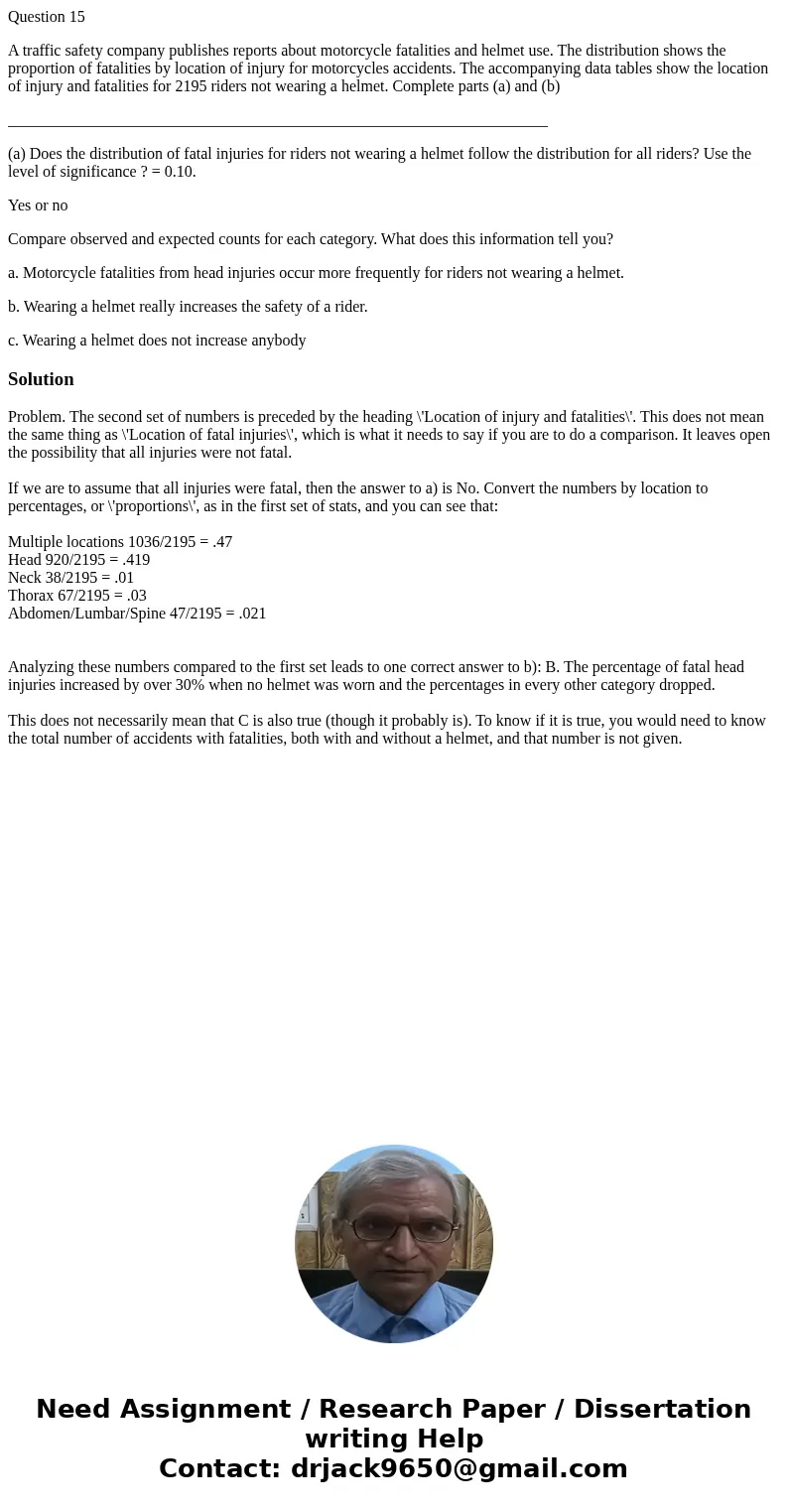Question 15 A traffic safety company publishes reports about
Question 15
A traffic safety company publishes reports about motorcycle fatalities and helmet use. The distribution shows the proportion of fatalities by location of injury for motorcycles accidents. The accompanying data tables show the location of injury and fatalities for 2195 riders not wearing a helmet. Complete parts (a) and (b)
____________________________________________________________________
(a) Does the distribution of fatal injuries for riders not wearing a helmet follow the distribution for all riders? Use the level of significance ? = 0.10.
Yes or no
Compare observed and expected counts for each category. What does this information tell you?
a. Motorcycle fatalities from head injuries occur more frequently for riders not wearing a helmet.
b. Wearing a helmet really increases the safety of a rider.
c. Wearing a helmet does not increase anybody
Solution
Problem. The second set of numbers is preceded by the heading \'Location of injury and fatalities\'. This does not mean the same thing as \'Location of fatal injuries\', which is what it needs to say if you are to do a comparison. It leaves open the possibility that all injuries were not fatal.
If we are to assume that all injuries were fatal, then the answer to a) is No. Convert the numbers by location to percentages, or \'proportions\', as in the first set of stats, and you can see that:
Multiple locations 1036/2195 = .47
Head 920/2195 = .419
Neck 38/2195 = .01
Thorax 67/2195 = .03
Abdomen/Lumbar/Spine 47/2195 = .021
Analyzing these numbers compared to the first set leads to one correct answer to b): B. The percentage of fatal head injuries increased by over 30% when no helmet was worn and the percentages in every other category dropped.
This does not necessarily mean that C is also true (though it probably is). To know if it is true, you would need to know the total number of accidents with fatalities, both with and without a helmet, and that number is not given.

 Homework Sourse
Homework Sourse